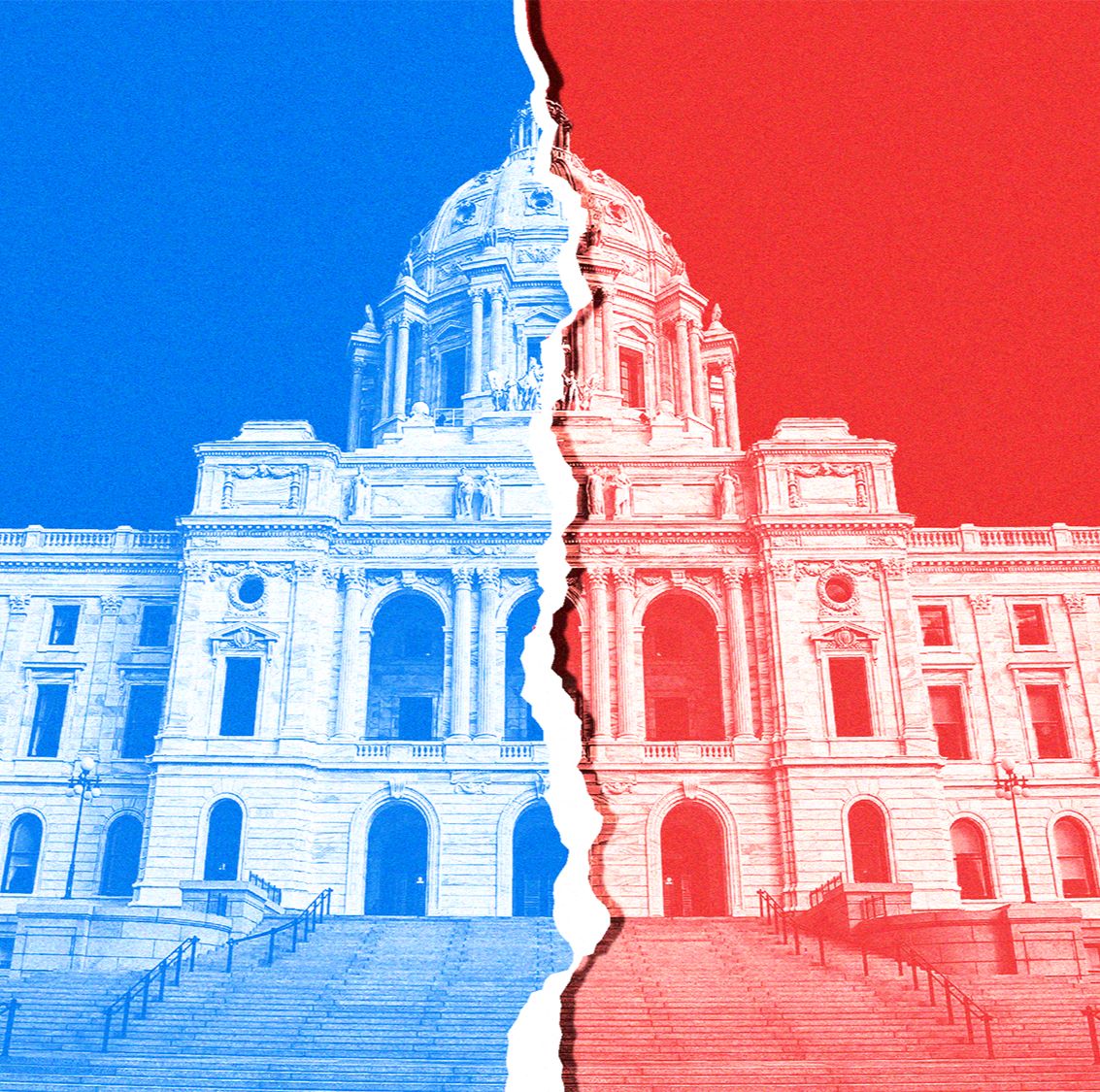Lobbyist

In the weeks since the election, there have been enough hot takes and post-mortems to last us until the next election cycle, which will be here before we know it.
Our public affairs team is adding our own analysis, recapping the results and sharing what we know—and don’t know—heading into Minnesota’s next legislative session.
What we know – for now
Let’s start off with what we know. Despite plenty of uncertainty, there are a few things we’re confident about heading into 2025.
- The session will start off slower than normal as lawmakers navigate a tied House and the complications of a new power-sharing agreement.
- When it comes down to it, the Legislature’s only priority is to pass a state budget, so that’s where the most time and energy will be spent.
- Minnesota’s financial outlook is strong, but given predictions of a “structural imbalance,” there is little room for increased state spending.
Read on to see what we’ll be watching as state leaders prepare for next session, including how Governor Tim Walz wields his influence, whether lawmakers moderate or double-down on partisan extremes, and the potential policy impact of delays and errors in tabulating election results.
Trump wins presidency, Minnesota incumbents sent back to Washington
Former (and future) President Donald Trump’s victory on November 5 makes him only the second president in history to serve non-consecutive terms. Vice President Kamala Harris’ loss means her running mate and our Gov. Walz is back in Minnesota and will serve out the remainder of his term, which ends in 2026. Looking to Congress, all of Minnesota’s incumbents were elected to serve another term. The only new member will be former state Senator Kelly Morrison, who easily won U.S. Representative Dean Phillips’ west metro congressional seat after he chose not to seek re-election.
What to watch in 2025: In his first hometown event post-election, Gov. Walz spoke to an auditorium of supporters and said that his administration would work to maintain the progressive agenda the DFL trifecta passed in 2023. We’re eager to see how he, and his team of policy advisors and state agency leaders, show up this next legislative session. With a narrowly divided Legislature, his influence could help shift momentum toward Democratic priorities.
A tied Minnesota House breaks the DFL trifecta
Although Vice President Harris won Minnesota, the coattails weren’t quite enough to help Minnesota’s DFL state representatives maintain control of the state House.
The House Republican Caucus held all of its current incumbents and picked up four seats in Greater Minnesota. Meanwhile, the House DFL Caucus held the seats it needed, but was unable to gain traction in suburban/exurban seats. Despite two close House races headed for a recount (more on that below), we expect to see the Minnesota House remain tied at 67-67. See how key races turned out.
What to watch in 2025: The power-sharing agreement that Speakers-designate Melissa Hortman (DFL-Brooklyn Center) and Lisa Demuth (R-Cold Spring) negotiate will determine how the Legislature functions—or doesn’t—in 2025. Already, they’ve settled on a committee structure and schedule, with committees led by DFL and Republican co-chairs and membership equally divided along party lines. Both leaders have said they’re ready to work together and started to tamper expectations for what can get done next session. But will their members follow suit? Pent-up frustration from Republican lawmakers stuck in the minority for two years and progressive Democrats looking to protect the state against Trump administration policies could shake up whatever delicate balance leadership tries to maintain.
Ballot drama continues
While the race for U.S. President was settled much quicker than many expected, it was a long night for those watching Minnesota legislative races. Some glitches in the Minnesota Secretary of State’s reporting system, coupled with volumes of last-minute absentee ballot drop offs, made for a rollercoaster of a night.
We will see two recounts in key races that will confirm the Minnesota House tie. In House District 14B, Rep. Dan Wolgamott (DFL-St. Cloud) was initially reported to have won by just 28 votes, although that margin has expanded to 191 votes after a mail-in ballot tally error. Sherburne County intends to hold a recount to encourage transparency and voter confidence. In House District 54A, Rep. Brad Tabke (DFL-Shakopee) won by 14 votes — well within the range for a publicly funded recount. An official recount has been requested, which will be held in Scott County on November 21.
What to watch in 2025: The ability for voters to turn in absentee ballots until 8 p.m. on Election Day has been cited by many local governments as the main reason for delays in vote counts, which can create an environment for conspiracies and disinformation. With election integrity top of mind for members of both parties, will we see any changes to election laws to avoid this fate in future elections?
